Content |
|---|
History
The West Highland White Terrier, better known as Westie, is a former Scottish hunting terrier. The little terriers from which the Westie they served humans for many years as watchdogs and hunters. It also, they made themselves useful in the house every day. Keeping houses free from rats and mice, driving away a marten or fox that wanted to feed on chickens or pigeons at night, they proved to be useful helpers at home and in court. The true strength of West Highland White Terrier was active fox hunting, the marten and the otter. The little terrier fearlessly and determinedly chased these thieves to the furthest corner of his den., where they were trying to get them out of the burrow, as the hunters counted. Like his three Scottish brothers, Skye and Cairn Terrier, the West Highland White Terrier he is one of the four descendants of these old men Scottish hunting terrier.
Like the others, comes from the great gene pool of all those Scottish terriers. Only through intentional breeding, that is to say, artificial separation, Scotland's four genetically separated lower terrier breeds were born. Your current form as “West Highland White Terrier” It is the result of a directed breeding as a companion and exhibition dog of the last 100 years. Until 1924 was raised and led along with the current Cairn-Terrier. The pure white color is the result of a selection of external traits from the time of the breeding of the sample.. It is an expression of efforts to make these four originally identical brothers more and more distinct from one another.. In 1907 the breed was recognized by the British Kennel Club. It was always a fairly rare breed in Europe. That suddenly changed around 1990.
The advertising industry recognized the attractive effect of this smart and happy little terrier. Dog food brands like “César” remain inseparably connected with Westie. The nice one Westie became widely known as a means of advertising dog food and later other items as well. Many people knew him as “the television dog”. He was temporarily better known than the Sausage dog or German shepherd. The serious breeding scene could not meet the demand for puppies from Westie. This could not be said twice by the multipliers from Germany and all over Europe. Dubious vendors massively selling puppies in the dog market. This was not good for the dog breed, your fitness and health. Still today many of these breeders, mostly well disguised “breed lovers”, frolicking on the Internet.
Physical characteristics
The West Highland White Terrier he is a small and manageable dog with an impressive appearance and self-confident. He's got a pretty thick overcoat with a hard top layer but doesn't lean. Your undercoat must be hair, short, smooth and dense. Your coat is weather resistant. With a height at the withers of about 28 centimeters, weighs between 6,5 and 8,5 kg. But, the ideal weight is not given by the standard. However, the Westies they are quite heavy relative to their physical size. Of course, the color of a coat Westie it should always be white and pure white, After all, it's already in your name.
After the experiences with the fashion hype, already in 1998 a special requirement for healthy breeding was set in the standard, so that any deviation that might “harm the dog's health and well-being”. A striking feature is the tail of the West Highland White Terrier, that the standard defines as: “of 13 to 15 cm long; covered with coarse hair, without pen, as straight as possible, haughtily carried, but neither happy nor hunched over the back. A long tail is not desirable, but for no reason should it be amputated. The tail of the Westies it is a good reflection of its intelligent nature.
Character and skills
The West Highland White Terrier he's a lively guy, bright and confident. In it beats the heart of a true terrier. The official standard describes its character as follows: “Petit, Active, bold, robust, endowed with considerable self-confidence and an air of predatory sharpness. Alert, joyful, brave, confident but friendly”. The old hunter has a tendency to independence and overconfidence. He likes to see himself as an emperor.
One should not only accept this trait with a smile and a broad inner smile., but rather appreciate it. Of course, such ambitions must have limits, but maybe you shouldn't always notice this boundary setting by us humans. The Westies they are very loyal and affectionate. They love their family and are extremely child friendly.. They are characterized by their friendly and kind character. But they are not lap dogs. Despite his agile temperament, the Westies are not restless or nervous. Are alert, reporting unusual circumstances with excited barking.
Westies Maintenance:
The attitude of the Westies has no problems. Only grooming is mandatory, especially regular trimming. It has no demands regarding the size of the floor. It can also be kept well on the floor of a big city. Only one should allow him his daily walks. It should be noted that Westies they were hunting dogs, whose heritage lives on even with today's companion. Small dogs are very persevering and can follow their owners without problems when walking. Must be used to other pets from litter box. If he West Highland White Terrier is consistently and lovingly educated as early as the puppy's age, then this sturdy four-legged friend is a valuable companion, that adapts easily and willingly to all the living conditions of its caregivers.
Westie's Education
The education of West Highland White Terrier is an often underrated chapter. Although the puppy looks so cute, especially in his first months of life, he is a true terrier very sure of himself. And such a terrier wants to be educated and guided. The Westie requires consequences in education from adulthood. Although small, dreams like most terriers in some corner of his brain of assuming leadership of the pack. You just have to take your education seriously. Otherwise, his education is not problematic. He wants and needs the guidance of his master or caretaker and is a docile companion., friendly and sociable.
Care of the West Highland White Terrier
The West Highland White Terrier are prone to rashes with dry skin, and frequent bathing can exacerbate these problems. The bathing them once a month – or a longer interval- does not usually cause problems. It is advisable to use neutral soaps or baby shampoo and avoid products with aggressive substances., except veterinary prescription.
After bathing they should pay particular attention in dry him very well the ears with a towel. If brushes you daily or regularly, his hair will remain healthy and bright.
It is also advisable to occasionally perform a brushing through the grubbing-up of dead hair (referred to as striping), It is a totally painless method which is performed by a professional expert in canine aesthetics. This type of arrangement will maintain the texture and characteristics of the white mantle of the Westie. As well, It should be cleaned them ears weekly with a piece of cotton dampened with water to remove wax buildup and avoid possible infections.
Special attention must be paid to cleaning the hair around the snout with a damp cloth after eating or digging a hole.. The same, the lagrimales should be cleaned to avoid the accumulation of lagañas, since being a white dog if it is not taken care of -diligently- maintain clean those parties they will wear an unsightly Brown and will make it look dirty or neglected. When they are pets they should be cleaned with baby wipes, especially the part of the belly already to be a dog with short legs, gets wet when they pee and ends up taking an ugly yellowish color.
West Highland White Terrier Health
Cubs West Highland White Terrier they may have a disease called “craniomandibular osteopathy”, known as “Jaw of the lion or Scottie” It consists in the abnormal growth of bone of the jaw. This genetic disease is autosomal recessive in nature, that means that what a puppy the present both parents should have the gene and transmit it to the puppy; Unfortunately, the only way to know if any breeding specimen contains this gene is until a puppy is born and presents this anomaly.. By the same, perhaps the breeder himself will not know that some specimen has this fault until the litter is born.
Is condition usually occurs when the puppy is between 3 and 6 months of age and disappears to the 12 months.
Diagnosis is usually made after x-rays are taken.. The treatment of the symptoms consists of providing medications that help the puppy to cope with this period., allowing him to eat and use its snout while it suffers from pain. Corticosteroids are therapeutic agents that are used most frequently. Disease disappears spontaneously when the period of growth ends. Only in very severe cases, It does not respond to treatment, is euthanasia.
Nutrition / Food
The nutrition of West Highland White Terrier not usually problematic, as long as it comes from a serious breeding. It is not uncommon for allergies and skin irritations to require a dietary diet.
Westie's Life Expectancy
The West Highland White Terrier of serious upbringing tend to have robust health and can reach 15 years in good physical condition.
Buy a West Highland White Terrier
There are many dubious providers of Westies on the Internet. In your own interest and especially for the welfare of dogs you should look very carefully. It is best to purchase your Westie puppy locally from an FCI member breeder. Here you should pay special attention that there is no inbreeding. Or you can go to the animal shelter and look for other types of terriers. Cubs West Highland White Terrier cost around 1.000 EUR.
Characteristics "West Highland White Terrier"
Coexistence is important that you have with your new friend. Before considering the acquisition of a dog of the breed "West Highland White Terrier" you know certain factors. Not all breeds of dogs are apt to live in an apartment, you must take into account his character, their need for exercise, their interaction with other pets, their care and if you have small children, their level of tolerance towards them.
Adaptation ⓘ4.0 out of 5 stars (based on 1 review)
|
friendly dog ⓘ4.0 out of 5 stars (based on 1 review)
|
hair loss ⓘ1.0 out of 5 stars (based on 1 review)
|
|---|---|---|
Affection level ⓘ4.0 out of 5 stars (based on 1 review)
|
Need for exercise ⓘ4.0 out of 5 stars (based on 1 review)
|
Social need ⓘ4.0 out of 5 stars (based on 1 review)
|
Home ⓘ3.0 out of 5 stars (based on 1 review)
|
Toilet ⓘ4.0 out of 5 stars (based on 1 review)
|
Friendly with strangers ⓘ4.0 out of 5 stars (based on 1 review)
|
barking ⓘ5.0 out of 5 stars (based on 1 review)
|
Health ⓘ5.0 out of 5 stars (based on 1 review)
|
Territorial ⓘ5.0 out of 5 stars (based on 1 review)
|
Cat friendly ⓘ3.0 out of 5 stars (based on 1 review)
|
Intelligence ⓘ4.0 out of 5 stars (based on 1 review)
|
Versatility ⓘ4.0 out of 5 stars (based on 1 review)
|
Child friendly ⓘ4.0 out of 5 stars (based on 1 review)
|
Surveillance ⓘ5.0 out of 5 stars (based on 1 review)
|
joy ⓘ5.0 out of 5 stars (based on 1 review)
|
Images "West Highland White Terrier"
photos:
1 – Tara posing in Simancas (Valladolid) 27 one. 2007
2 – West Highland Terrier by Antonio Villascusa / CC BY
3 – A West Highland White Terrier in Capelle aan den IJssel, Netherlands. by Wouter Engler / CC BY-SA
4 – West Highland White by https://commons.wikimedia.org/w/index.php?title=User:Mateo_Squad&action=edit&redlink=1
5 – West Highland White Terrier from 1915 by not specified (except those with signature on image) / Public domain
6 – West Highland White Terrier by SheltieBoy / CC BY
Videos "West Highland White Terrier"
Type and recognitions:
- FCI CLASSIFICATION: 5
- Group 3: Terriers
- Section 2: Small sized Terriers. Without working trial..
Federations:
- – FCI – Terriers 2 Small sized Terriers. ⓘ
- – AKC – Terriers ⓘ
- – ANKC – Terriers ⓘ
- – CKC – Terriers ⓘ
- – KC – Terriers ⓘ
- – NZKC – Terriers ⓘ
- – UKC – Terriers ⓘ
FCI breed standard "West Highland White Terrier"
Alternative names:
1. Poltalloch Terrier, Roseneath Terrier, White Roseneath Terrier, Westie (or Westy) (English).
2. Westie (French).
3. Weißer Hochlandterrier, „Westie“, ursprünglich: Poltalloch Terrier, Roseneath Terrier (German).
4. Westie (Portuguese).
5. Westie, Westy (español).
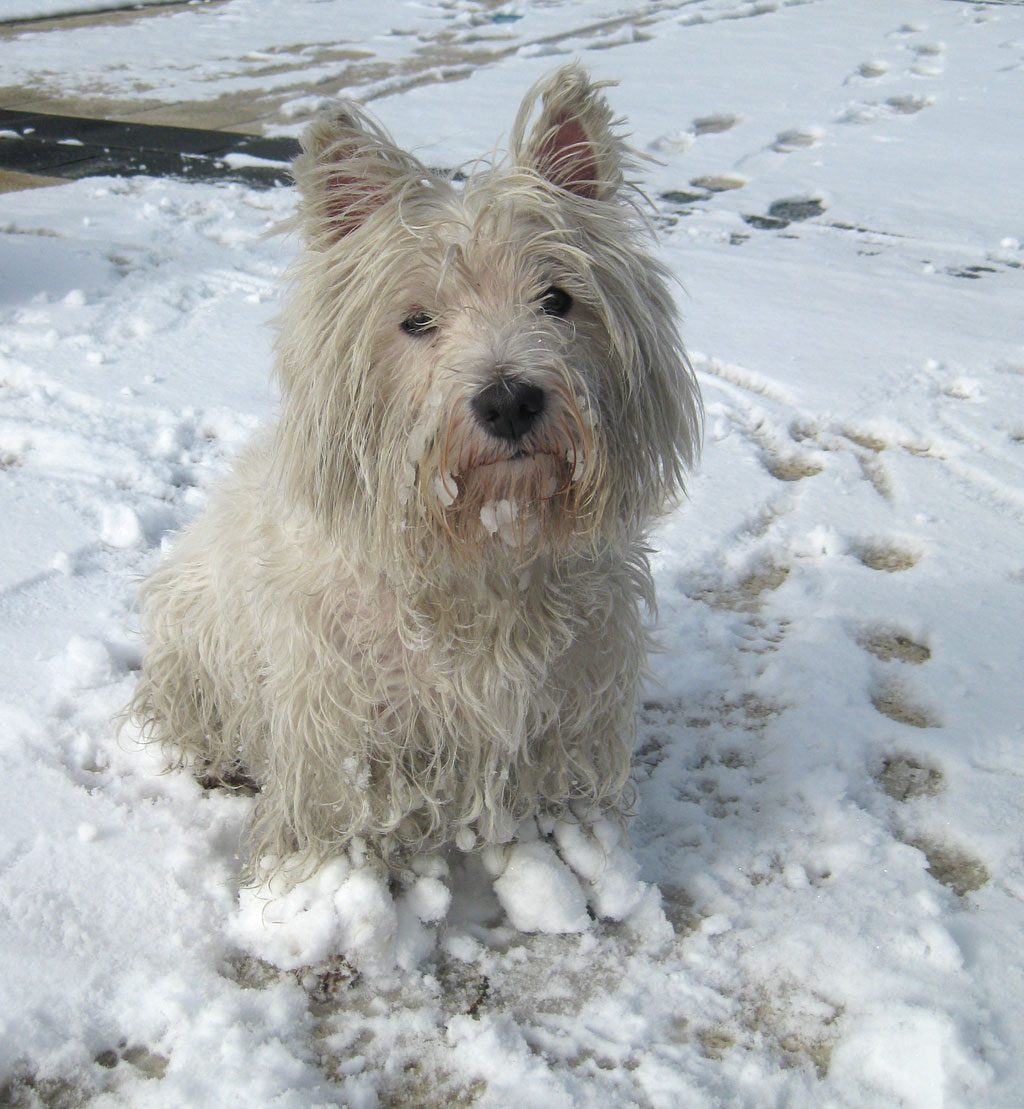
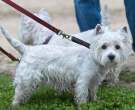
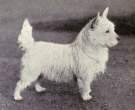
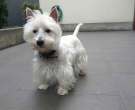

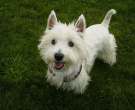
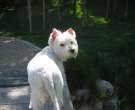
 What are Westies dogs like??
What are Westies dogs like?? 8 Interesting curiosities of the Westy Terrier
8 Interesting curiosities of the Westy Terrier West Highland White Terier – Girl, tricks, tricks 🙂
West Highland White Terier – Girl, tricks, tricks 🙂 6 weeks old westie Mina
6 weeks old westie Mina